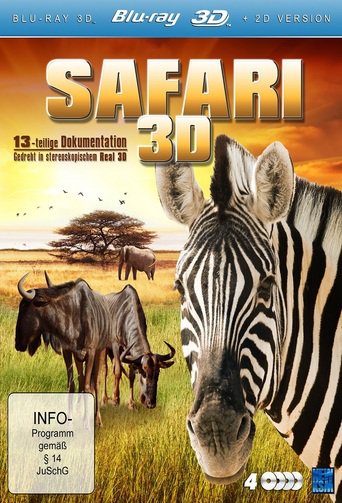Safari Season 2

The award-winning educational zoological series hosted by Canadian naturalist John Ross brings you face to face with the most fascinating creatures on earth. Never before has there been such an insightful and timely wildlife series. The cameras of Safari tell a compelling story, never shying away from showing the whole picture. Safari provides an unflinching portrait of animals in the wild with emphasis on endangered species.
Watch NowWith 30 Day Free Trial!
Safari
1996 / TV-PG
The award-winning educational zoological series hosted by Canadian naturalist John Ross brings you face to face with the most fascinating creatures on earth. Never before has there been such an insightful and timely wildlife series. The cameras of Safari tell a compelling story, never shying away from showing the whole picture. Safari provides an unflinching portrait of animals in the wild with emphasis on endangered species.
Watch Trailer
Safari Season 2 Full Episode Guide
World renowned environmentalist John Ross examines the large population of hippos within the Okavango Delta and their relentless defense of their territory. In addition, he views the return of the white rhinoceros in South Africa after nearly being extirpated across the continent.
The Red Crown Crane has the captured the imagination of artists and poets in the hearts of Japanese people for centuries. At one time the birds were common throughout Japan and much of Asia. But today, the last large concentration making up one-third of the surviving population lives only here in Hokkaido.
Known commonly as "Snow Monkeys", the Japanese Macaques are the focus of this "Safari" episode. As John Ross travels to the freezing temperatures found in the Japanese Alps, he will share his experiences with these amazing and intelligent animals. You will learn of how the Macaques came to exist in Japan, and of the evolvement of their social rituals and survival.
John Ross takes viewers to Japan and the United States to look at the Steller's sea eagle and the bald eagle which are both raptors.
Ranging from freezing to well above 120 degrees Fahrenheit, the desert is populated by some of the most amazing plants and animals that have ingeniously adapted to the environment. Join John Ross on this fascinating community of wildlife, and learn of the survival techniques of such animals as...the desert tortoise, the Gila monster, a variety of snakes, and many, many others.
John Ross pays tribute to the many conservationists who are involved in studying about the populations of moose, alligators, lynx, Polar bears and many other animals that have become subjects of serious concern.
John Ross take viewers on a trip to Idaho's Sawtooth National Forest to study the behaviour and general lifestyle of raptors. With a wide variety of sizes and types, they have one thing definitely in common which is being keen hunters from the air with eyesight greater than any human being.
John Ross and viewers experience a truly delightful sight of mammals giving birth. The Black bear species is a normally solitary nomad except during the mating season in summer months while Polar bears always reside in cold climates. Amazingly, the mother will sacrifice at least seven months of eating while with young. This episode also features a family of wolves and red foxes.
Free Trial Channels
Seasons


























